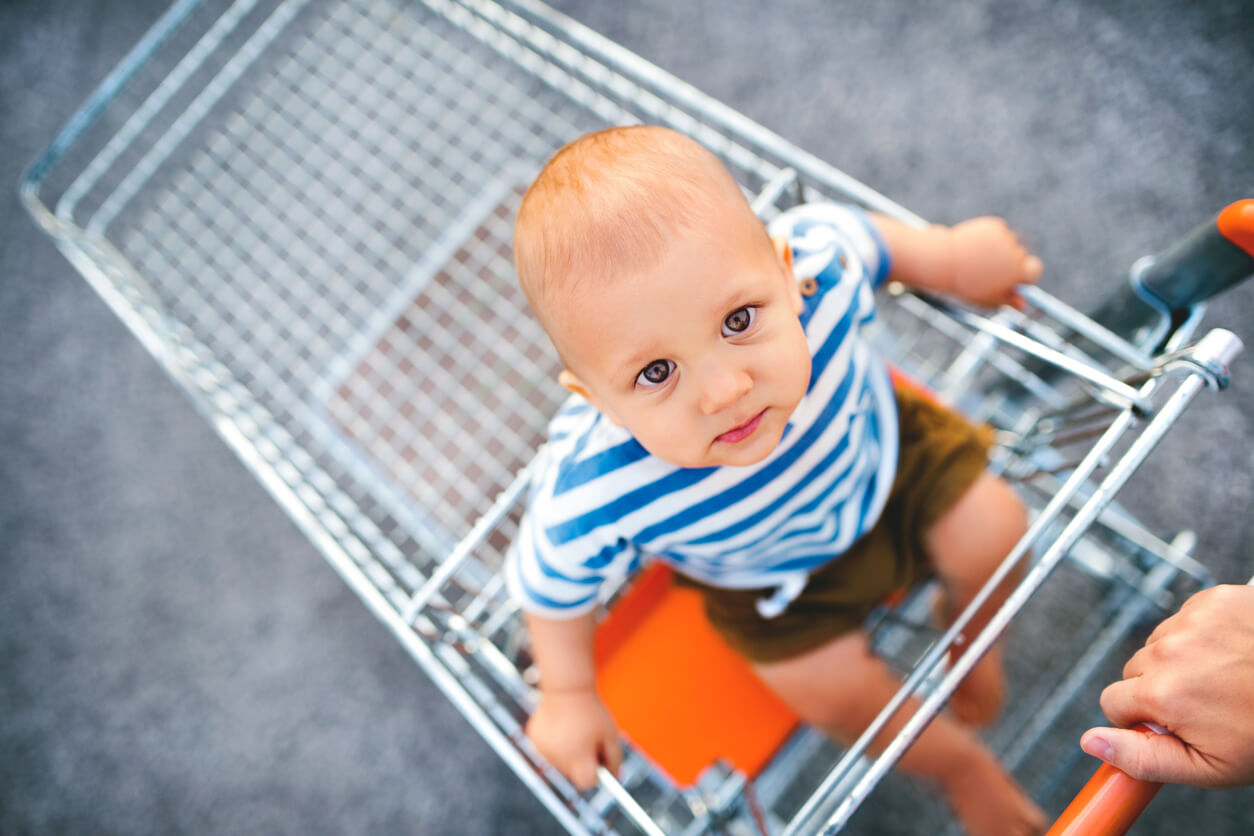7 Tips for Shopping with Children

Going to the supermarket or the mall with your kids is something you have to plan ahead of time. For this reason, we want to offer you some tips to go shopping with children and transform this outing into a true family plan.
Take advantage of these moments to spend time together while you fill the cupboard, find that special gift, or renew your closet. The key is to organize the outing with time and astuteness so that it’s calm, fun, and meets your objectives.
What should I consider? What things do I have to avoid? Below, we’ll give you all the answers. Keep reading!
The essential tips for shopping with children
Although it may seem exaggerated, it’s best to think that the outing begins before leaving home. Because for the experience to be successful, it’s essential to be psyched up and organized. Having a clear and precise plan will allow your little ones to leave in a more calm and animated state.
1. Pick the right moment
One of the best tips for going shopping with children is not to do it on a Friday afternoon when they’re exhausted from their weekly grind. Instead, choose a day when they have little or no school activities.
If you have babies, you can take advantage of nap time and have them sleep in their stroller. But if you have older children, it’s best to adapt to their schedules and activities, so you don’t have to deal with them being in a bad mood the entire time.
The American Psychological Association offers some useful recommendations for attending a public place with an infant and they are as follows:
- Be patient. Young children are learning to behave outside the home.
- Take short trips.
- Avoid going out when your children are tired or hungry.
- Always bring some toy or item to entertain them.

2. Give importance to the time before going out and patiently explain what the outing will be like
When you’re still at home with the children, explain to them that shopping is an important part of the family routine and that they can participate and help in this task. For example, writing down the items to be bought, planning the route, or placing the products in the supermarket cart.
3. Set behavioral guidelines
As an adult, you know that shopping malls and supermarkets are designed to attract the public and persuade them to buy. Sales techniques are also focused on children and for this reason, in these places, there are irresistible colors, sounds, and aromas.
So, you need to point out to your children that they’re going to buy something specific and that the rest of the items are not included in this purchase. This will help them understand that tantrums won’t give them what they want.
Also, and this goes for all outings, always warn them that there are usually many people in these places and that they shouldn’t move away from you at any time.
4. Let them choose some products
Once in the shopping area, let your children help you bring the products to the cart or push it themselves.
Also, you can give them options so that they participate in the choice of some items, such as the taste of yogurt or the type of fruit to consume at home.
5. Buy without haste, but without pause
Some of the reasons for the bad behavior of children when accompanying their parents when they go shopping are tiredness and boredom. Therefore, try to make the entire ride quick and dynamic.
Avoid stopping to research a product in detail or compare prices with your cell phone. That can be the spark that lights the fire!
6. Think positively, but realistically
Of the tips for shopping with children, this is perhaps one of the most useful for your mental health.
When you go out with your little ones, you should keep in mind that there are many factors capable of throwing the plan overboard: Boredom, tiredness, hunger, fatigue, or frustration. In some cases, you’ll be able to anticipate them and avoid them, but in others, they’ll take you by surprise.
For this reason, our recommendation is that you think positively, and if a tense situation breaks out, resolve it patiently and without losing your temper.
7. Return home: Congratulations and help
Once you get home, ask your children to help you lower the lighter bags, unpack the products, and put them away.
Also, thank them for accompanying you and congratulate them for their good behavior. This is very important because it will make them feel important, they’ll enjoy it, and it will motivate them for the next outing.
The benefits of going shopping with children

Although it can be exhausting at times, going shopping with your children can be an amazing and beneficial experience for the whole family.
Find out how to transform this activity into a time for connection and learning.
For young children, shopping can help them develop their spatial intelligence, some reading skills, and even math. For example, when reading labels and prices.
Also, when you go shopping you spend time with your children in a neutral environment, which can be conducive to connecting and talking about what happened that day. Although they’re surrounded by people, they’re in complete privacy.
Finally, this activity is perfect for learning about sustainability and also about nutrition and health.
Get the most out of the supermarket!
We hope that these tips for shopping with children have helped you plan your next trip with them to the supermarket or the mall.
The idea is that, on this walk, everyone can enjoy the moment and get something positive out of it, be it an experience, a lesson, or a beautiful memory.
All cited sources were thoroughly reviewed by our team to ensure their quality, reliability, currency, and validity. The bibliography of this article was considered reliable and of academic or scientific accuracy.
- American Psychological Association (2017) Rabieta en un Supermercado. Parenting Program of APA Disponible en: https://www.apa.org/act/resources/espanol/comportamientos-36-meses
- Univisión (2020). Supermercados con zonas didácticas: la alternativa educativa que padres aplican en Brooklyn. Univisión, Nueva York. Disponible en: https://www.univision.com/local/nueva-york-wxtv/supermercados-con-zonas-didacticas-la-alternativa-educativa-que-padres-aplican-en-brooklyn
